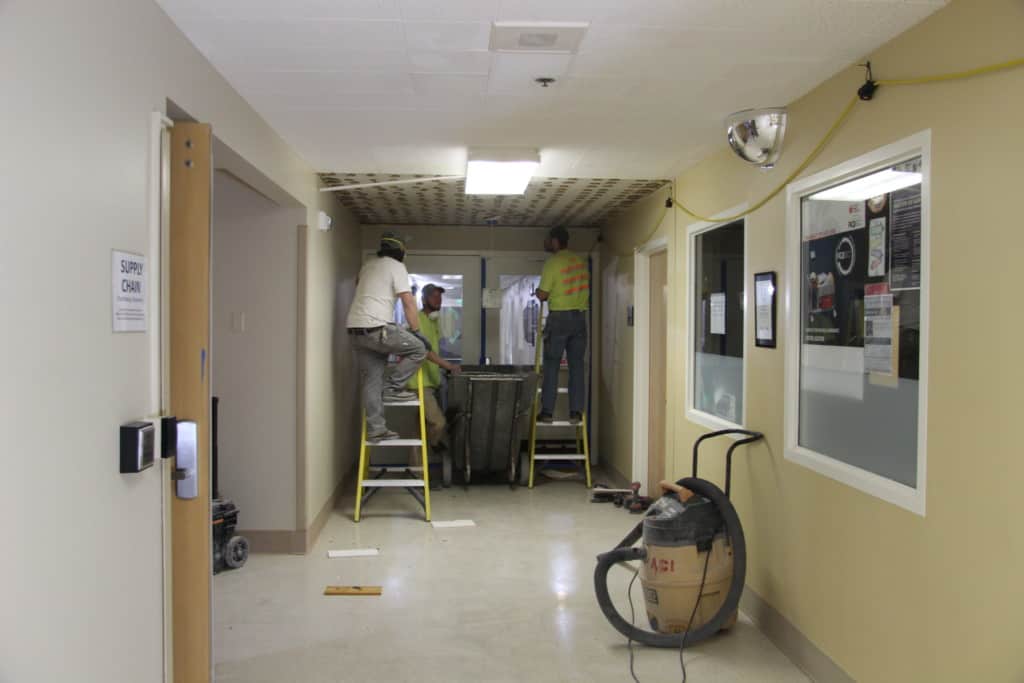Roof, systems project undertaken to improve 1962 building

 As those visiting Island Hospital may have noticed, a major construction project is underway, one that includes replacing a 57-year-old roof – that would typically have a lifespan of 25 years – heating, ventilation and air-conditioning (HVAC) equipment; fire-suppression system; and lighting. The roof and underlayment materials of the original hospital building (circa early 1960s) are being replaced with a modern roof and “drop” ceilings similar to the modern buildings on campus.
As those visiting Island Hospital may have noticed, a major construction project is underway, one that includes replacing a 57-year-old roof – that would typically have a lifespan of 25 years – heating, ventilation and air-conditioning (HVAC) equipment; fire-suppression system; and lighting. The roof and underlayment materials of the original hospital building (circa early 1960s) are being replaced with a modern roof and “drop” ceilings similar to the modern buildings on campus.
The $5.2-million project, started in March and expected to be completed in December, required the temporary of clearing a number of offices, storage areas and other spaces.
However, the impact on patient care is and will be minimal, according to Dave Scherer, Director of Facilities. “Interior work is being done during off-hours, so all services are being maintained.”
“I have to note the overall participation by the entire hospital since we began, it’s been a team effort and I’m thankful for everyone’s patience and support. This is a very important project to preserve the integrity, contents and operations of this building.”
Included in the areas being upgraded are the Island Hospital Foundation offices, Dietary office, Facilities Department, Administration, the Bistro and main hospital storeroom (part of the Supply Chain Department). The storeroom, purchasing and receiving areas had to be moved to allow for removal of the older, and installation of an energy-efficient ventilation system (which is housed on the roof directly above). The storeroom is temporarily located in the Medical Arts Pavilion on the east side of the hospital campus, requiring all deliveries of hospital materials to this location.
“We are doing very well despite moving from our area that is larger and built to handle delivery trucks and hundreds of different supplies and equipment used to run a hospital,” said Supply Chain Director Eric Hao. “Departments are all cooperating and the teamwork has been exceptional to ensure we don’t disturb important patient-care activities in this building.”
Money for the project has come from capital reserve funds, with $96,000 from Puget Sound Energy in utility incentives. The project is expected to decrease annual energy costs by 8%.
Published on June 13, 2019
